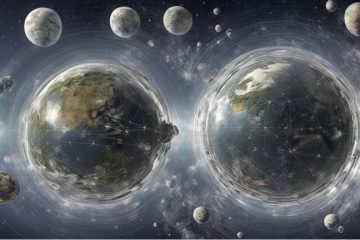Embracing the Magicality of Science

A few weeks ago, Renny Thomas argued on this blog that “rituals and prayers are very much part of the public imagination of science in India.” Many readers from Europe and North America may have the impression that this observation differs quite significantly from what they know about their own societies. But is this difference as strong as the dominant view would have it? In the end, much of what people in Europe think about “religion” and “science” is the result of a pretty short history: Cultural developments in the nineteenth and twentieth centuries formed current understandings of science and religion, often in direct relation to each other. How Europeans positioned themselves vis-à-vis religion and science seemed to determine how ‘enlightened’ and how ‘modern’ they were.
A third term played a decisive role in this identity work, too: magic. Around 1900, the triangle of science, religion, and magic became a kind of litmus test to determine the ‘progress’ of cultural history. The separation of these terms also influenced historical imagination. For many people today, the histories of science and religion have distinct features, and people tend to assume the two have been more or less distinct for over 2,500 years. According to this modern narrative, we can distinguish three important steps in cultural development: The origins of science can be found in ancient Greek thinking of the sixth and fifth centuries BCE, particularly in the work of the philosopher Thales (d. 546 BCE). The ancient Greeks, we are told, had already reached an impressive level of scientific rational thinking, but the rise of Christianity in late antiquity led to a decline of these traditions, as medieval Christian intellectuals were more interested in theology than in rational, systematic engagement with the natural world. Then, with the Renaissance and the scientific revolution, ancient Greek science was reestablished. This third phase paved the way for modern science, which—so the story goes—increasingly emancipated itself from religion, beginning with the eighteenth-century Enlightenment and continuing into the twentieth century.
One noteworthy feature of this common narrative is the assumption that religion and science had distinctive characteristics from the beginning, thus representing two significantly different ways of engaging with the world. A closer look at the historical material, however, quickly reveals the problems of such an assumption, and many historians (e.g., Peter Harrison) today call it a myth.
So how can we find a path to a more accurate understanding of the relationship between science, religion, and magic? I argue that despite some influential rhetoric that makes Europeans feel “modern,” these domains have never really been separated. Let me explain what I mean with reference to some of the underlying theories that try to understand the powers at work in the cosmos and in the human being. These theories apply to magic just as well as to religion and science, and they provide an analytical lens that renders a clear picture of the interferences between those allegedly distinct domains. What does that mean concretely?
Greek and Roman philosophies developed a number of theories that described the cosmos (Greek for “order”) as a network of forces and energies. The human being is woven into these networks and has the capacity to understand how natural forces work. When it comes to our topic, the philosophical school of the Stoa was particularly influential. Engaging Platonic and Aristotelian cosmological models, Stoic philosophers came up with the idea of a “sympathy” that connects layers of reality and objects in the world. They also were interested in the idea that the cosmos ultimately consists of interlocking systems of causality.
Philosophers in the early Islamic period further developed these theories. Of particular importance is the scholar al-Kindī (c. 800–866), who was part of the rich cultural development that turned Baghdad into a center for science, philosophy, and the arts. Al-Kindī wrote hundreds of books and treatises, but when it comes to magic, science, and religion, his theory of rays deserves special attention. In this work, he argues that the four elements, along with composite bodies and the planets, constitute a unified reality. All parts of the cosmos are in constant relation with one another, as every object projects its own nature outwards, by means of “rays” that transmit that nature to other objects. According to al-Kindī, everything transmits rays: elements, souls, bodies, physical objects, planets, images, musical notes, and words. The flux operating between all of these objects is the basic condition of their relationship and mutual dependence. This is exactly why prayers have impact and why rituals, images, and words “work.”
For medieval and Renaissance culture, and even for some modern thinkers, al-Kindī’s theory of rays was considered extremely important as a theory of magic. It also influenced art theory at the time: The power of images was interpreted as a physical contact between a painting or object and the observing eye. This is very similar to practices in India, where seeing—darśan—is understood as an act of touching.
Since the emergence of modern science in the twentieth century, have Europeans done away with such an interpretation of reality? Many scholars doubt that. Peter Pels maintains that theories of magic and science reveal “the magicality of modernity’s attempt to oppose magic” and that we need to explore “the magic of modernity itself” (p. 38). Similarly, Bruno Latour has famously problematized the superiority of what Westerners call “modernity.” Going one step further, Latour merges the concepts of “fetish” and “fact” into factish, a term that places more emphasis on the practical aspect of (making) theory than common understandings of “fact” would allow.
Indeed, let us not be fooled by overly simple distinctions between science, religion, and magic. The magicality of science and the factishes we produce on a daily basis are reminders that these domains have existed together all the time. Europeans may have a lot to learn from Indian practices that openly embrace these complexities.
#
Kocku von Stuckrad is one of the co-founders and co-directors of Counterpoint: Navigating Knowledge. As a Professor of Religious Studies at the University of Groningen (Netherlands), he works on the cultural history of religion, science, and philosophy in Europe. A revised English version of his recent German book will be published as A Cultural History of the Soul: Europe and North America from 1870 to the Present by Columbia University Press in 2021. He lives in Berlin.
Counterpoint blogs may be reprinted with the following acknowledgement: “This article was published by Counterpoint Navigating Knowledge on 22 September 2020.”
The views and opinions expressed on this website, in its publications, and in comments made in response to the site and publications are those of the author(s) and do not necessarily reflect the views and opinions of Counterpoint: Navigating Knowledge, its founders, its staff, or any agent or institution affiliated with it, nor those of the institution(s) with which the author is affiliated. Counterpoint exists to promote vigorous debate within and across knowledge systems and therefore publishes a wide variety of views and opinions in the interests of open conversation and dialogue.
Photo credit: Photo by Kei Scampa from Pexels



